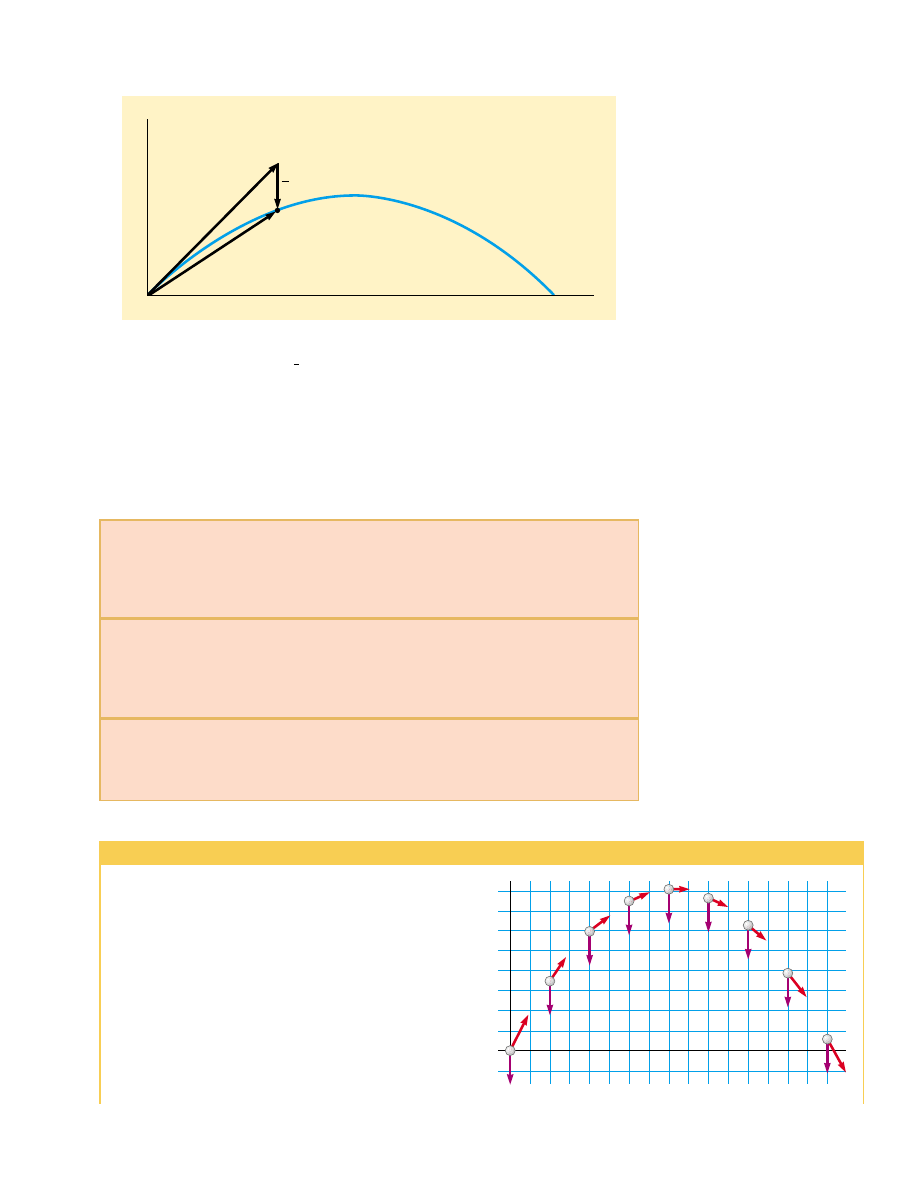Physics For Scientists And Engineers 6E - part 22

S E C T I O N 4 . 3 • Projectile Motion
85
(1)
constant-velocity motion in the horizontal direction and (2) free-fall motion
in the vertical direction. The horizontal and vertical components of a projectile’s
motion are completely independent of each other and can be handled separately, with
time t as the common variable for both components.
Quick Quiz 4.3
Suppose you are running at constant velocity and you wish
to throw a ball such that you will catch it as it comes back down. In what direction
should you throw the ball relative to you? (a) straight up (b) at an angle to the ground
that depends on your running speed (c) in the forward direction.
Quick Quiz 4.4
As a projectile thrown upward moves in its parabolic path
(such as in Figure 4.8), at what point along its path are the velocity and acceleration
vectors for the projectile perpendicular to each other? (a) nowhere (b) the highest
point (c) the launch point.
Quick Quiz 4.5
As the projectile in Quick Quiz 4.4 moves along its path, at
what point are the velocity and acceleration vectors for the projectile parallel to each
other? (a) nowhere (b) the highest point (c) the launch point.
Example 4.2 Approximating Projectile Motion
A ball is thrown in such a way that its initial vertical and hor-
izontal components of velocity are 40 m/s and 20 m/s, re-
spectively. Estimate the total time of flight and the distance
the ball is from its starting point when it lands.
Solution A motion diagram like Figure 4.9 helps us concep-
tualize the problem. The phrase “A ball is thrown” allows us
to categorize this as a projectile motion problem, which we
analyze by continuing to study Figure 4.9. The acceleration
vectors are all the same, pointing downward with a magni-
tude of nearly 10 m/s
2
. The velocity vectors change direc-
tion. Their horizontal components are all the same: 20 m/s.
Remember that the two velocity components are inde-
pendent of each other. By considering the vertical motion
Figure 4.9 (Example 4.2) Motion diagram for a projectile.
r
f
x
(x, y)
gt
2
v
i
t
O
y
1
2
Figure 4.8 The position vector r
f
of a projectile launched from the origin whose initial
velocity at the origin is v
i
. The vector v
i
t would be the displacement of the projectile if
gravity were absent, and the vector
is its vertical displacement due to its downward
gravitational acceleration.
1
2
gt
2